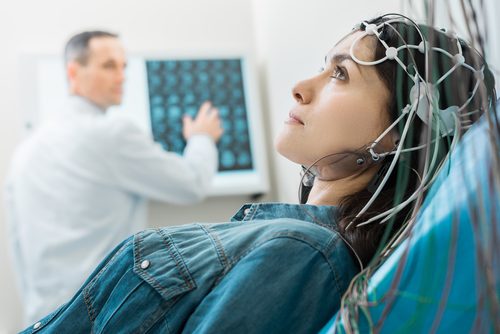Unilateral CP Patients May Benefit from Brain Stimulation Plus Hand Exercises, Study Suggests

Brain stimulation paired with hand function training is safe and well-tolerated in children and young adults with unilateral cerebral palsy, a study reports.
In addition, although the results seem to vary, this combination approach may provide some benefits to these patients, according to the researchers.
The study, “Transcranial Direct Current Stimulation (tDCS) Paired with Occupation-Centered Bimanual Training in Children with Unilateral Cerebral Palsy: A Preliminary Study,” was published in the journal Neural Plasticity.
Cathodal transcranial direct current stimulation (tDCS) is a noninvasive brain stimulation technique that delivers a constant, low, direct electrical current through electrodes to the brain to inhibit the electrical impulses of nerve cells.
Among other things, this neurostimulation method allows scientists to examine the functioning of the primary pathway for producing voluntary movement (corticospinal tract), which is damaged in people with cerebral palsy.
Research indicates that upper limb rehabilitation, including bimanual training (exercises performed with both hands) and constraint-induced movement therapy, may contribute to improved muscle function in children with unilateral cerebral palsy.
University of Minnesota researchers had previously shown that tDCS paired with constraint-induced movement therapy — restraint of the unaffected limb combined with intensive use of the affected one — improved hand function after a 10-day intervention. However, they were not able to link this benefit to tDCS itself, because there were no significant differences between the study sample and the sham group. But serial sessions of tDCS were found to be safe and well-tolerated.
As part of this study (NCT02250092), the researchers also aimed to determine the effectiveness of bimanual training combined with tDCS in children and young adults with unilateral cerebral palsy.
For 10 days, eight young patients (three boys and five girls, ages 7-21 years) with an “active” (functioning) corticospinal pathway in the injured side (hemisphere) of the brain underwent daily 20-minute sessions of cathodal tCDS to the non-injured hemisphere, along with 120 minutes of bimanual, goal-directed training.
The brain stimulation method was intended to make the primary cortex (the brain region that regulates movement) on the non-lesioned hemisphere less active, so that the lesioned side could become more active and display greater motor control over the affected limbs.
During the bimanual intervention, the participants played with games and toys that required the use of both hands. They also practiced two-handed daily activities, such as putting their hair in a ponytail, tying their shoes, and buttoning their clothing.
“Motor training focused on the participant’s goals,” the scientists said.
The team measured the frequency of side effects and assessed the effectiveness of the intervention as well as the patients’ functional performance and neural function.
Results showed that tDCS was well-tolerated. There were no serious adverse events, but three patients (37.5% of the study sample) reported minor side effects related to active tDCS in more than one neurostimulation session. The most common complaint was unusual feelings on the skin of the head.
Hand function evaluations demonstrated that three out of eight patients had small improvements. None of these three patients reported a minimal clinically important difference in their perception of performance in everyday living, but the remaining five did.
A test of manual dexterity (Box and Blocks Test) revealed that two patients had better gross manual dexterity in their more affected hand, while one patient had improvements on the less affected hand.
According to a semi-structured item-response questionnaire that rates a person’s perceived difficulty of bimanual activities (ABILHAND), three participants saw their manual ability improve slightly.
One week before the start of the trial and one week after ending the protocol, the scientists mapped patients’ functional connectivity within the brain using transcranial magnetic stimulation (TMS), another type of brain stimulation. Voluntary contraction of the hand muscles is interrupted (cortical silent period) when TMS is applied to the brain side (contralateral) controlling the hand.
Changes in TMS response of the non-injured hemisphere were observed in five out of the eight participants and were indicative of a decrease in excitability (activeness) after the combined intervention.
Researchers also reported that six patients with analyzable data presented smaller cortical silent periods — meaning there was a reduction in the amount of time their voluntary muscle contraction was interrupted by TMS. In four of the six participants, scientists were able to map more active brain sites within their pathway of interest. This seems to suggest an increase in excitability in the non-lesioned brain halve.
Although tDCS and bimanual training appear to be safe and well-tolerated, no objective conclusion could be drawn from the results, since TMS findings were inconsistent.
“Our neurophysiologic findings suggest that the combined intervention affects each hemisphere differently, which may underlie variability observed with changes in behavioral hand function measures,” the researchers concluded. Further research is necessary.


